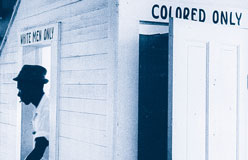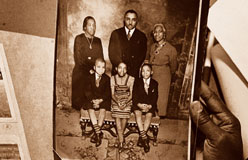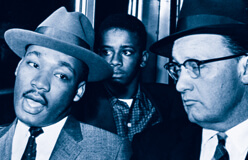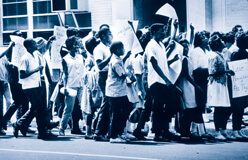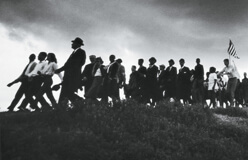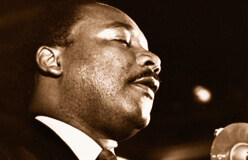The Montgomery bus boycott made King famous. He became very busy.
He helped form a new organization, the Southern Christian Leadership Conference (SCLC). It was dedicated to working for civil rights, and he became its leader. He also wrote a book about the boycott. While he was signing copies of it in a New York City bookstore, a mentally ill woman stabbed him in the chest with a letter opener. His doctor told him that if he had sneezed, he could have died. The attack helped King understand that he faced enemies and maybe even death.

